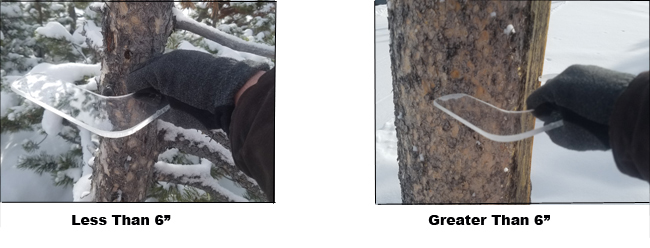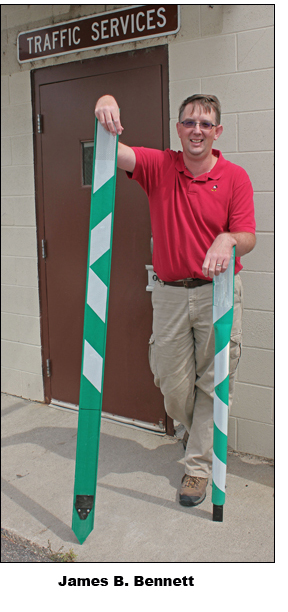

D4's Bennett knuckles down for tree gauge
![]()
When it comes to design and project cost, Mother Nature is just one of the many items taken into account. 
“If there’s a site where trees are present, we abide by the appropriate guidelines set forth in the Standard Specifications for Highway Construction” said James Bennett, a TTE from District 4. “Section 202 of that publication states that the removal of trees or stumps with diameters of less than six inches is incidental to other earthwork contract pay items.”
What does that mean to the non-engineering folks out there?
Basically, it means that if the diameter of a tree is less than six inches, the contractor will simply remove the vegetation at no additional cost. If a tree is greater than six inches in diameter, then additional costs are incurred for each tree within that category that is removed.
The reason is simple: removing trees less than six inches in diameter is fairly easy as a contractor can simply bulldoze the area versus spending time and resources to cut down and haul the vegetation elsewhere.
Trees are not typically a determining factor in the design of a particular project, but they definitely are a consideration.
“ITD tries to avoid the removal of trees when possible and some areas harbor a greater consideration than others. For example, if the vegetation holds historical significance, or helps support sensitive wildlife in the area, we factor those aspects into our analysis," said District 4 Environmental Planner Connie Jones.
For the most part however, it’s typically just a matter of determining whether or not a specific tree falls into the ‘greater than’ or ‘less than’ category. To assist with this endeavor, James Bennett worked with Bridge and Building’s Tracy Anderson to fabricate a tool called the Tree Gauge. Using the Tree Gauge, an individual can quickly determine whether or not the diameter of a tree is larger than six inches.
Bennett said “all trees have to be measured at a distance of two feet above the ground line to ensure consistency – if your knuckles touch the tree trunk while holding the gauge properly, it’s under six inches, if your knuckles don’t touch the trunk, it’s over six inches.” Although all measurements would be verified independently by a contractor, the Tree Gauge serves as a quick and easy tool for initial site assessments.
For those interested in a measuring tool of your very own, you’re in luck. District 4 created a template that fits easily on an 8.5 x 11-inch piece of paper and can be used to cut a Tree Gauge to spec. Although acrylic is a good medium due to its light weight and easy portability, any preferred material would work for the tool.
Published 06-29-18